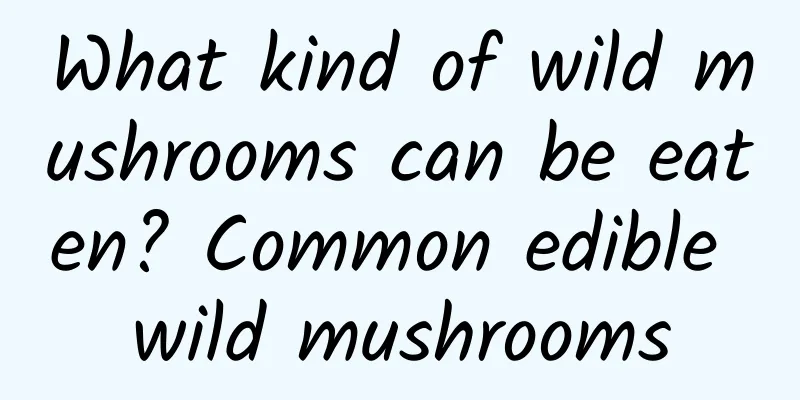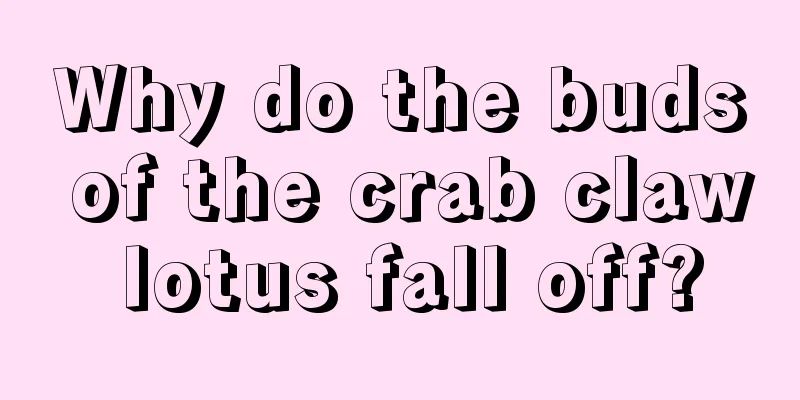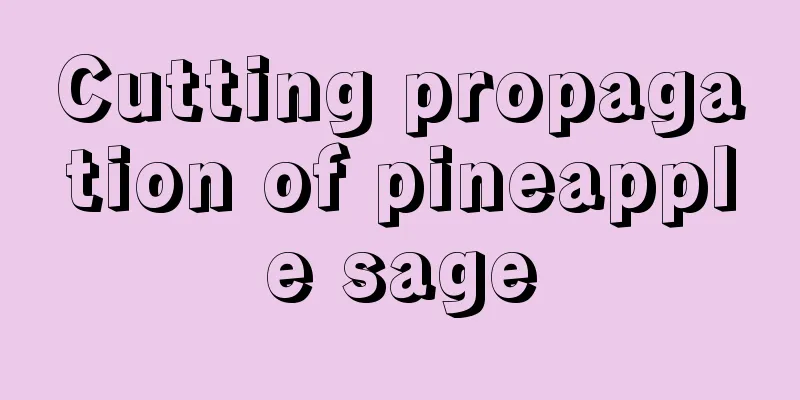What kind of wild mushrooms can be eaten? Common edible wild mushrooms

|
Common edible wild mushrooms in life include pine mushrooms, hens mushrooms, chestnut nests, horse bubble, big red mushroom, water chicken mushroom, torch chicken mushroom, yellow-skinned chicken mushroom, chicken butt mushroom, chanterelle, yellow Laitou, black boletus, yellow boletus, milk mushroom, blue-headed mushroom, and Matsutake mushroom. What kind of mushrooms are edible?Generally speaking, wild mushrooms that are brightly colored, have bumps, spots, cracks, bubbles, oozing, rings, stipes, and strange shapes all contain toxic components to varying degrees. Since there are many types of poisonous mushrooms, most people find it difficult to identify them. Therefore, when purchasing wild mushrooms, you should stick to the principle of only buying mushrooms you know to avoid eating them by mistake. You can identify them from the following points: How do you know if wild mushrooms are edible?1. Look at the growing area Generally, non-toxic wild mushrooms grow on clean pine trees, oak trees, and grass. If they grow in dark, damp and dirty areas, do not pick and eat them. 2. Look at the shape Generally, non-toxic wild mushrooms have a flat cap, a smooth cap, no wheels on the surface, and no sterile tray at the bottom. If the cap is convex in the center, has a strange shape, has a thick and hard surface, has a ring on the stem, is thin or thick, and is easy to break, then do not eat it. 3. Look at the color Generally, non-toxic wild mushrooms have bright colors, such as red, green, ink black, and purple. If they are purple, they are mostly poisonous and cannot be eaten. 4. Smell Generally, non-toxic wild mushrooms smell like a special fragrance. If they smell spicy, sour, or fishy, they are poisonous and should not be eaten. 5. Look at the secretions Generally, non-toxic wild mushrooms will have a watery secretion when the stem is torn open, and the mushroom surface will not change color when broken. If the secretion is thick and reddish brown, it means it is poisonous. 6. Rub with green onion to see if there is any discoloration Generally, the surface of non-toxic wild mushrooms will not change color after the cap is rubbed with onions. If it turns bluish-brown, it means it is poisonous. 7. Boil with rush and garlic to see if there is any color change Generally, when non-toxic wild mushrooms are cooked together with rush and garlic, the rush and garlic will not change color. If they turn into blue-green or purple-green, it means they are poisonous and should not be eaten. |
>>: How to plant the rhizomes of copper coin grass in hydroponics and soil cultivation methods
Recommend
Bonsai suitable for housewarming
1. Anthurium The color of its flowers is very uni...
Fertilization and watering requirements for lily of the valley
1. Fertilization requirements 1. Different period...
Several flowers you can buy in early spring, much more beautiful than green radish
Cineraria The flowering period of Cineraria is fr...
Which month is suitable for planting sugarcane in Henan Province?
When is sugarcane planted in Henan Province? Suga...
Can Dieffenbachia prunings be hydroponically cultivated?
1. Can it be hydroponically grown? Dieffenbachia ...
What is red amaranth?
What is red amaranth? Red amaranth is a vegetable...
What is strawberry and how to grow it
1. What is a strawberry? Strawberry is a plant of...
How long does it take for purple pearl succulent leaves to germinate
How long does it take for purple pearl succulent ...
How to prepare soil for growing vegetables on the balcony? Soil requirements for growing vegetables
Suitable soil requirements for balcony vegetable ...
When is the harvest season for white sweet potatoes? What month is the harvest season?
White sweet potato harvest time White sweet potat...
The efficacy and function of Dendrobium chrysanthemum
1. As a medicinal material This plant is very fam...
She planted succulents in a basket and carried it out to buy groceries. Everyone passing by turned around to look at her!
If you do this with succulent baskets, the return...
Can honeysuckle be grown indoors?
Can honeysuckle be grown indoors? It is not recom...
Can the love vine be propagated by leaf cuttings? Methods and steps for propagation by cuttings
Can the vine of love be planted by leaf cuttings?...
What to do if the cactus does not take root
1. Paper towel root inducement If you want the ca...









